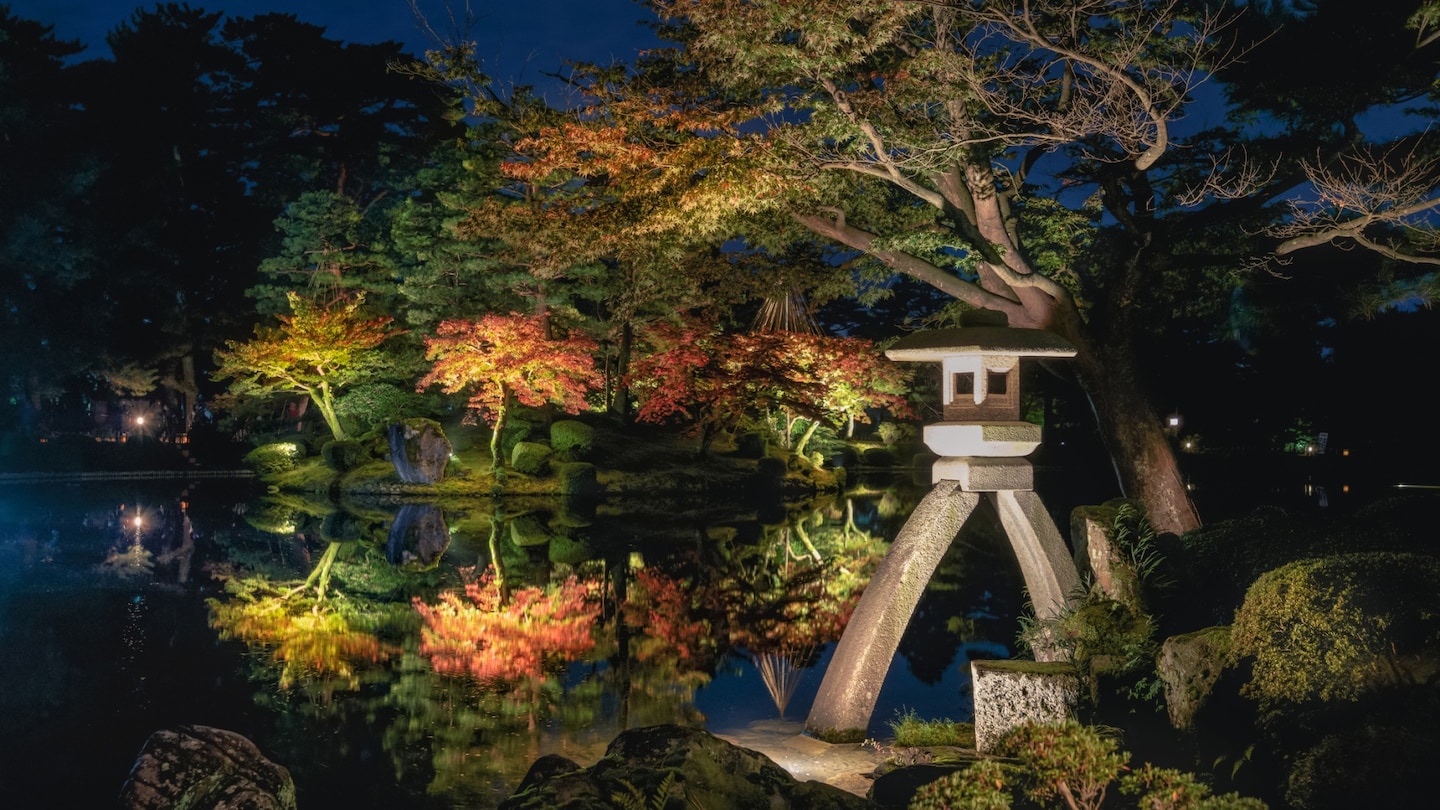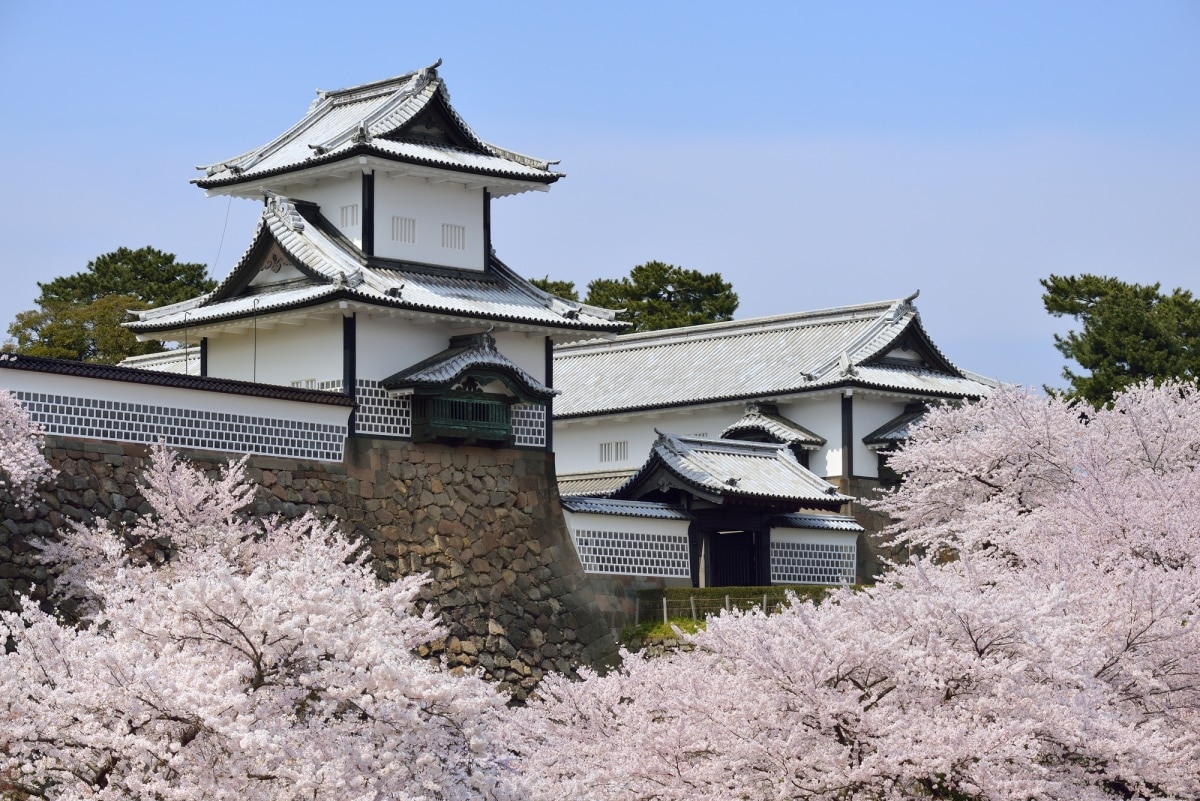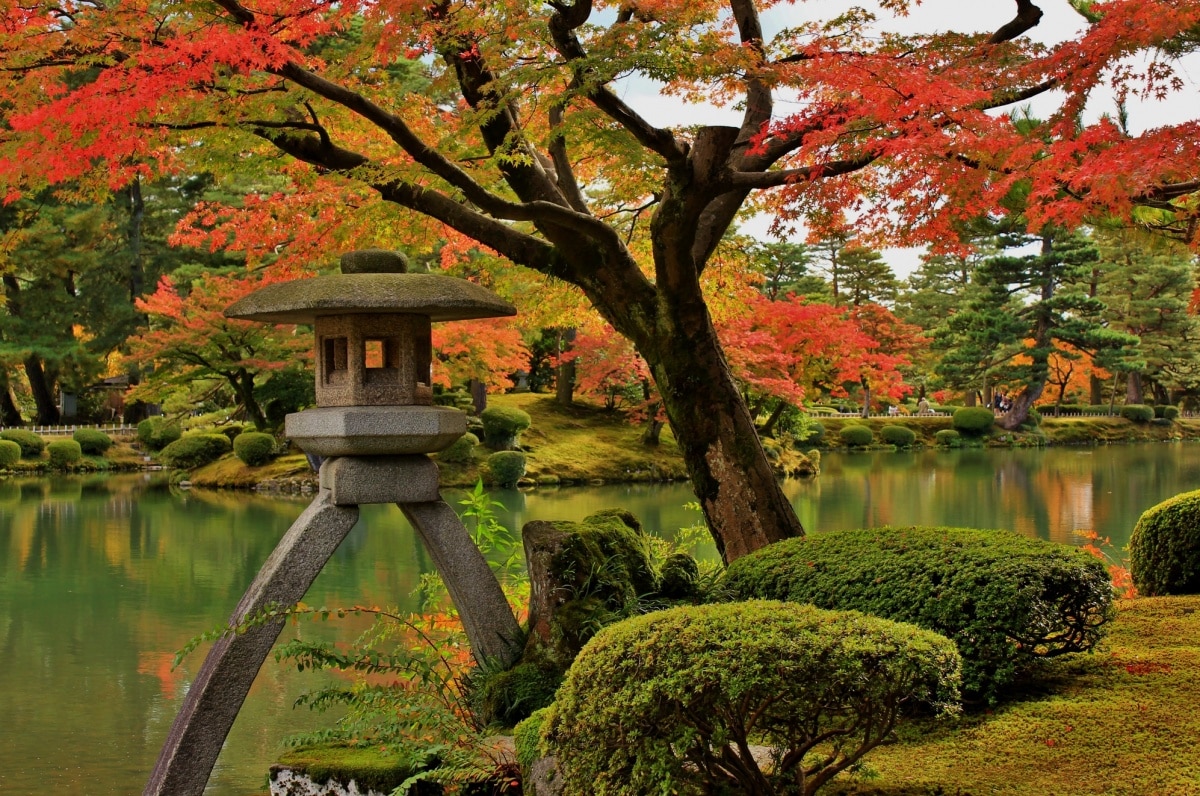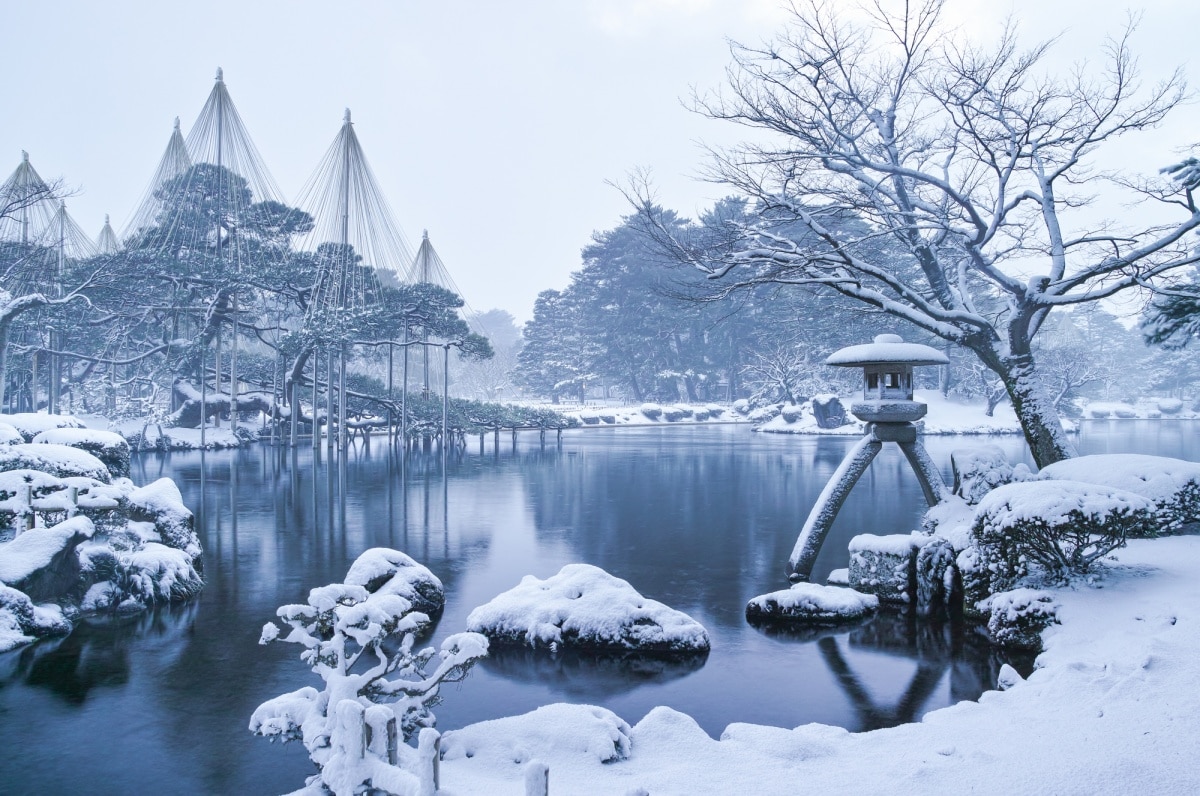Kanazawa Castle & Kenrokuen Garden

The two most prominent symbols of Kanazawa, the capital of Ishikawa Prefecture, are Kanazawa Castle and Kenrokuen Garden. These two sites were emblematic of the power of the clan that dominated the region throughout the Edo Period (1603-1868). Located right beside one another, if you see nothing else in Kanazawa, you must see these two sites.
By Michael KanertKanazawa Castle

Kanazawa Castle was the seat of the Maeda Clan’s power over the Kaga Domain, which was the wealthiest han, or fief, in Edo Period Japan, now divided into Ishikawa and Toyama Prefectures. The castle's thick outer walls still stand ranked and angled like a massive ziggurat, while in its day the Ni-no-maru (second bailey) residence was so expansive that it was known as the Palace of 1,000 Tatami Mats.
Construction on Kanazawa Castle began in 1592 at the command of Maeda Toshii, one of the leading generals under Oda Nobunaga and Toyotomi Hideyoshi. Along with Tokugawa Ieyasu, Toshii was among the Five Elders selected to administer the country after Hideyoshi's death.
https://www.youtube.com/watch?time_continue=183&v=E9hYuLt3_qs
Since a lightning strike first destroyed the central donjon in 1602, the castle has burned down no less than five times. Its ultimate end came in 1881 when the forces of the Meiji Restoration zealously razed symbols of the shogun’s rule across the nation. The oldest existing structure, the Ishikawa-mon Gate, was built in 1788, following a particularly disastrous fire in 1759.
In 2001, several major structures were restored using traditional construction methods, including a pair of three-story watchtowers connected by a winding warehouse. Appearing as it would have in 1809, the present reconstruction represents the largest wooden castle built in Japan since the Meiji Period.
Kenrokuen

Crossing a high bridge over a steep valley, the Ishikawa-mon Gate leads directly to Kenrokuen, one of Japan’s Three Great Gardens (the other two gardens, Korakuen and Kairakuen, can be found in Okayama and Mito, respectively). Beginning development in 1676 under the fifth Maeda lord, Kenrokuen was originally the castle’s outer garden, but as subsequent generations of lords added tea houses, waterfalls, winding streams, and other expansions, the garden gradually grew to occupy a total area of some 11 hectares (28 acres).
The garden was given its name in 1822 by Sadanobu Matsudaira, a retired councilor to the shogun known for his literary skill. In Chronicles of the Famous Luoyang Gardens, the Chinese poet Li Gefei described six characteristics of a perfect landscape garden: spaciousness and seclusion, artifice and antiquity, and watercourses and panoramas, all interplaying against one another. While it's said to be rare for a garden to combine more than half of these characteristics, the name Kenrokuen (兼六園) literally declared this to be a "Garden of Six Characteristics."
Opened to the public in 1874, visitors to Kenrokuen can stroll among the pines and ponds, admire the Emerald Waterfall and visit the Yugao-tei Teahouse, the oldest structure on the grounds, built in 1774. Kotoji-toro, a two-legged stone lantern that sits on the edge of Kasumi-ga-ike Pond, is emblematic not only of the garden but of Kanazawa City itself. Beyond the pond stands a statue of Yamato Takeru, wielder of the legendary sword Kusanagi-no-turugi, and the garden is also home to the oldest fountain in Japan, a simple spout operating via natural water pressure.
Kanazawa Castle and Kenrokuen can be accessed by bus from Kanazawa Station (¥200, about 10 min). Entrance to the garden is ¥310, while the castle grounds may be entered free of charge, though a there is a fee for entering the reconstructed buildings. The grounds are adjacent to the 21st Century Museum of Contemporary Art, and within (relative) walking distance of Higashi Chaya-machi, a quaint area of geisha houses preserved in their traditional form.




